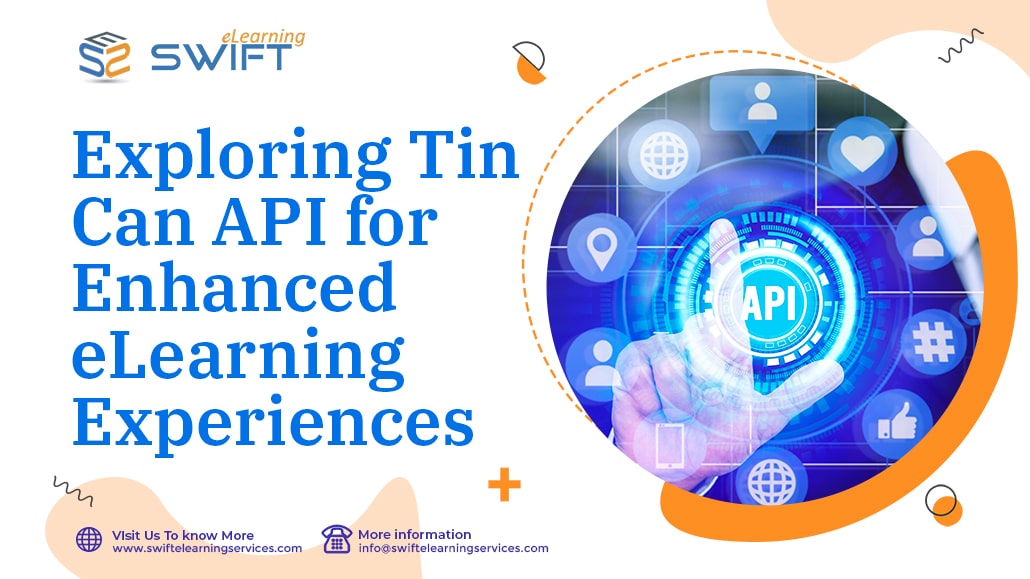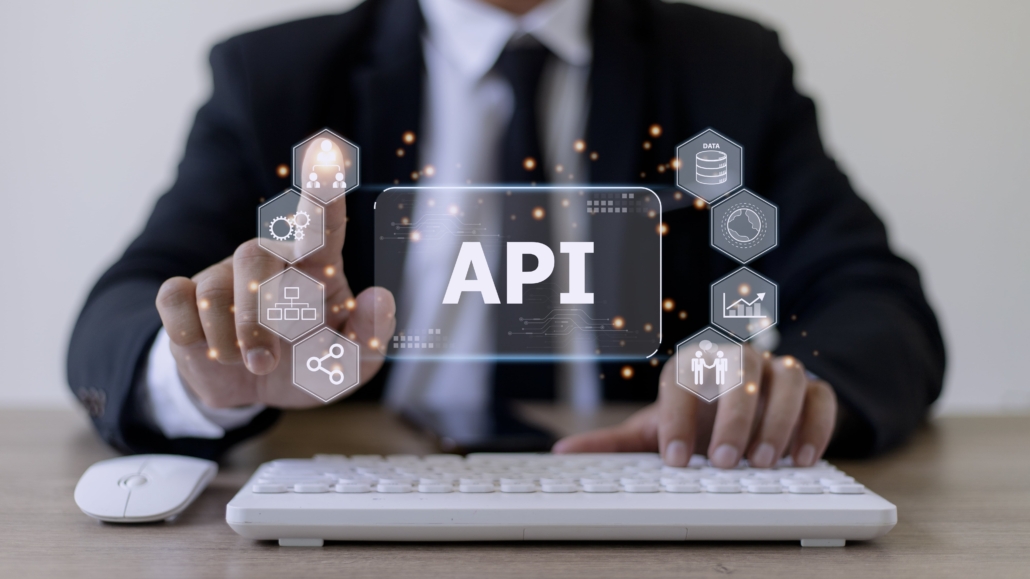Exploring Tin Can API for Enhanced eLearning Experiences
In the ever-evolving landscape of education, eLearning has emerged as a powerful tool for delivering knowledge and skills to learners of all ages and backgrounds. As technology continues to advance, so does the need for more robust and flexible ways to track and measure learning experiences. Enter Tin Can API, also known as Experience API or xAPI. This innovative technology is revolutionizing the eLearning industry by providing a versatile and comprehensive way to collect and analyze data from a wide range of learning activities.
In this blog, we will delve into the world of Tin Can API and explore how it can enhance eLearning experiences.
1. What is Tin Can API?
Tin Can API is a data specification that allows for the collection and tracking of learning experiences, both online and offline. It is designed to replace the older SCORM (Sharable Content Object Reference Model) standard, which had limitations in tracking learning activities beyond traditional eLearning courses.
Tin Can API is not limited to a specific platform or format and can capture learning experiences from various sources, including eLearning courses, mobile apps, simulations, virtual reality, and even real-world activities.
2. Key Features of Tin Can API
2.1 Versatility
One of the primary advantages of Tin Can API is its versatility. It can track a wide range of learning experiences, from completing an online module to attending a physical workshop or reading a book. This versatility enables organizations to gather data on various learning activities, providing a more holistic view of the learner’s journey.
2.2 Offline Tracking
Unlike SCORM, Tin Can API allows for tracking of offline learning experiences. This means that learners can engage in activities outside of a traditional eLearning environment, such as attending a conference or participating in a hands-on workshop, and still have their progress and achievements recorded.
2.3 Granular Data
Tin Can API collects granular data about learning experiences. It tracks not only whether a learner completed a course but also how they performed, which specific modules they interacted with, how much time they spent on each activity, and much more. This level of detail provides valuable insights for instructional designers and educators.
2.4 Real-time Reporting
With Tin Can API, data is transmitted in real-time, allowing for immediate access to performance data. This real-time reporting enables timely interventions and adjustments to learning content or strategies to improve learner outcomes.
2.5 Cross-platform Compatibility
Tin Can API is platform-agnostic, meaning it can be integrated with various learning management systems (LMS), authoring tools, and content platforms. This compatibility ensures that organizations can continue to use their existing eLearning infrastructure while benefiting from the enhanced tracking capabilities of Tin Can API.
3. How Tin Can API Enhances eLearning Experiences
Now that we have a better understanding of what Tin Can API is and its key features, let’s explore how it enhances eLearning experiences.
3.1 Personalized Learning Paths
Tin Can API allows organizations to gather detailed data on each learner’s interactions with content. This data can be used to create highly personalized learning paths. For example, if a learner struggles with a particular topic, the system can automatically recommend additional resources or activities to address their specific needs. This level of personalization can significantly improve learner engagement and success rates.
3.2 Comprehensive Assessment
Traditional eLearning assessments often focus on multiple-choice questions or quizzes. Tin Can API enables organizations to assess learners’ performance in a more comprehensive manner.
For example, it can track how learners apply their knowledge in real-world scenarios, such as solving complex problems or making informed decisions. This approach provides a more accurate picture of a learner’s capabilities and readiness for real-world challenges.
3.3 Competency-based Learning
Competency-based learning is gaining traction in the eLearning industry. With Tin Can API, organizations can track not only the completion of courses but also the development of specific competencies or skills. This enables learners to progress at their own pace and receive recognition for their achievements based on demonstrated skills rather than traditional course completion.
3.4 Seamless Blended Learning
Blended learning, which combines traditional classroom instruction with online activities, is becoming increasingly popular. Tin Can API supports blended learning by tracking both online and offline activities. This allows educators to seamlessly integrate various learning modalities and assess their effectiveness in achieving learning objectives.
3.5 Real-world Application
One of the most significant advantages of Tin Can API is its ability to track real-world learning experiences.
For example, if employees attend a workshop or conference, their participation and learning outcomes can be recorded. This data can be valuable for organizations looking to measure the impact of such activities on employee performance and development.
3.6 Continuous Improvement
Tin Can API provides a wealth of data that can be used for continuous improvement. Organizations can analyze the data to identify trends, bottlenecks, and areas where learners may be struggling. This information can inform instructional design decisions, content updates, and teaching strategies to enhance the overall eLearning experience.
4. Implementing Tin Can API in Your eLearning Strategy
Now that we’ve explored the benefits of Tin Can API for enhancing eLearning experiences, let’s discuss how you can implement this technology in your organization’s eLearning strategy.
4.1 Select a Learning Management System (LMS) that Supports Tin Can API
The first step is to choose an LMS that is compatible with Tin Can API. Many modern LMS platforms support this technology, but it’s essential to ensure that your chosen LMS can integrate seamlessly with Tin Can API for data collection and reporting.
4.2 Define Learning Objectives and Metrics
Before you can effectively use Tin Can API, you must clearly define your learning objectives and the specific metrics you want to track. What are the key performance indicators (KPIs) that matter most to your organization? Establishing clear goals will help you collect and analyse relevant data.
4.3 Design Learning Experiences with Tin Can API in Mind
When developing eLearning content, consider how Tin Can API can capture data from various interactions. Ensure that your content and activities are designed to provide the necessary tracking information. Work with instructional designers who are familiar with Tin Can API to optimize your course content.
4.4 Test and Evaluate
Before launching your eLearning courses, thoroughly test the Tin Can API integration to ensure that data is accurately collected and reported. Identify any issues or areas for improvement during the testing phase and make necessary adjustments.
4.5 Train Instructors and Learners
Educate your instructors and learners about the benefits of Tin Can API and how it will enhance their eLearning experiences. Provide training on how to access and interpret the data generated by Tin Can API, so they can make informed decisions about their learning journeys.
4.6 Monitor and Analyze Data
Once your eLearning courses are live, continuously monitor and analyze the data collected through Tin Can API. Look for patterns, trends, and areas where improvements can be made. Use this data to make data-driven decisions to enhance your eLearning offerings continually.
5. Challenges and Considerations
While Tin Can API offers numerous benefits for enhancing eLearning experiences, there are some challenges and considerations to keep in mind:
5.1 Implementation Complexity
Integrating Tin Can API into existing eLearning systems can be complex. It requires the development of custom code or the use of specialized authoring tools and LMSs that support the specification. Organizations need to allocate resources and expertise to ensure a smooth implementation.
5.2 Data Privacy and Security
Collecting and storing detailed learning data raises concerns about data privacy and security. Organizations must establish robust data protection measures to safeguard learner information and comply with data privacy regulations like GDPR.
5.3 Standardization
While Tin Can API is more flexible than SCORM, it can still lead to fragmentation if not implemented consistently across platforms. Standardization efforts are ongoing to ensure interoperability among different systems.
5.4 Data Interpretation
Collecting data is one thing; interpreting it is another. Organizations need data analysis skills and tools to derive meaningful insights from the vast amount of data Tin Can API can generate.
6. Conclusion
Tin Can API is a game-changer in the world of eLearning. Its versatility, granular data tracking, and real-time reporting capabilities empower organizations to create more personalized, effective, and engaging learning experiences.
While implementing Tin Can API may pose some challenges, the benefits it offers in terms of flexibility, adaptability, and data-driven improvements in eLearning are well worth the effort. As the eLearning industry continues to evolve, Tin Can API is poised to play a pivotal role in shaping the future of online education.
Organizations that embrace this technology can provide more engaging and effective learning experiences for their learners, ultimately leading to better outcomes and increased knowledge retention.
Frequently Asked Questions (FAQs)
What is Tin Can API, and how does it differ from traditional eLearning standards like SCORM?
Tin Can API, also known as Experience API or xAPI, is a data specification that revolutionizes eLearning by offering versatile tracking of learning experiences. Unlike SCORM, Tin Can API is not limited to specific formats or platforms, allowing it to capture a wide range of learning activities both online and offline.
How does Tin Can API improve personalized learning?
Tin Can API enables organizations to collect detailed data on learners’ interactions with content. This data can be used to create personalized learning paths, offering tailored recommendations and resources based on each learner’s needs and progress.
Can Tin Can API track real-world learning experiences, such as workshops and conferences?
Absolutely! Tin Can API is designed to track real-world learning experiences, whether it’s attending a workshop, participating in a conference, or any other offline activity. This feature provides valuable insights into the impact of such activities on learners’ development.
How does Tin Can API support competency-based learning?
Tin Can API allows organizations to track the development of specific competencies or skills, rather than just course completion. This approach promotes competency-based learning, where learners are recognized based on their demonstrated skills and abilities.
What are the steps to implement Tin Can API in an eLearning strategy?
To implement Tin Can API, start by selecting an LMS that supports it, define clear learning objectives and metrics, design content with Tin Can API tracking in mind, thoroughly test the integration, train instructors and learners, and continuously monitor and analyze the collected data to make data-driven improvements.









Leave a Reply
Want to join the discussion?Feel free to contribute!